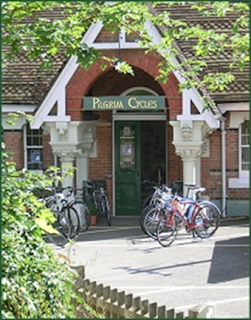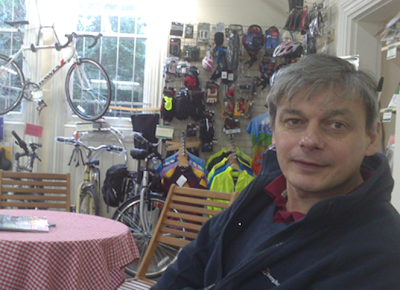From Chris Jeggo
I read John Murdoch’s reply with great interest, and it is very useful to have this debate.
I agree with much of what he says. In his second paragraph he talks about “very different conclusions”. My conclusion was that there is no point in using a normal intensity rear lamp in fog, while his was that it is sensible to use only high-intensity rear lamps in fog. Is there any incompatibility there? In fact, last Wednesday I noted what high-intensity lamps Louise and Nick were using with the intention of buying one myself, to supplement my existing lamp and for use only in fog.
They do dazzle, and I used that specific word, not ‘distract’ or ‘inconvenience’. The problem with dazzle lies in the way the human eye works; it adjusts its sensitivity to compensate for the bright object in the scene with the result that less bright objects (potholes?) become more difficult to discern. It’s not a problem in daylight but it certainly is at night. Fog lamps should only be used in poor visibility. Oh, and if you are using a bright rear lamp why would you want to be anywhere else than at the back of the group, because otherwise a following rider will obscure it and annul its effectiveness.
So how bad was the visibility last Wednesday? I estimated it to be about 100m, give or take a physicist’s margin of error, 25% say. And of course it varied a bit from place to place. From time to time I asked myself ‘What is the furthest object I can see?’ and ‘Roughly how far away is it?’ Now 100m is a borderline case in two senses. Firstly, if visibility is below 100m cars MUST use headlamps; if it is above 100m they MUST NOT use fog lamps.
Secondly, let’s try and be a bit more precise regarding John’s conclusion that if the motorist behind sees the cyclist before his lamp then it is probably too late. According to ‘The Highway Code’ the typical stopping distance for a car travelling at 70mph is just under 100m (including the “thinking distance”), so I would substitute ‘sometimes’ for ‘probably’.
I would not call 100m visibility “extremely foggy” or “truly poor”. I remember cycling round in my teens on foggy nights in an industrial town fuelled universally by coal. Visibility down to 20m, 10m, less … it was difficult to pick out the kerbs sometimes. Cyclists would catch up with motorists because they could see better, they didn’t have six feet of foggy dead space in front of them (a typical car bonnet length in those days, before the Mini).
So the extent of my disagreement with John is just the extent to which he overstated his case!












